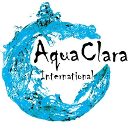How Do Water Filtration Systems Work?
As the world continues to grow and progress, there’s still one simple thing that everyone on the planet needs in order to survive: clean water. However, around 30% of people around the world don’t have access to safe drinking water. Consuming unsafe water can result in negative health effects and even lead to death. That’s why water filtration—and expanding access to water filtration systems—is so important.
Water filtration systems help to remove harmful chemicals and other contaminants from water, making it safe to drink. There are different levels of water filtration, including the larger scale in bottled water plants and municipal water treatment facilities, as well as in your own home.
Throughout all of these specific instances of water filtration, there are a few different methods that are used to filter water. Some of the most common types of water filters include:
- Activated Carbon – Activated carbon filters are the most common type of home filtration system, and they use charcoal (a porous form of carbon) to remove impurities from water. This happens through a process called adsorption, where the charcoal attracts and traps chemical contaminants.
- Sand – Sand filters work similarly to activated carbon filters, but instead of charcoal, they use sand to filter out impurities in water through a process known as mechanical filtration. Mechanical filtration occurs when bacteria and contaminants can’t physically move past something—in this case, sand—but the rest of the water can.
- Reverse Osmosis – Reverse osmosis is a water filtration process where contaminated water is forced through a very fine filter at high pressure. This allows the water to pass through the filter but leaves the contaminants and impurities behind.
- Ion Exchange – Ion exchange filters help to soften water by removing limescale. This is done by splitting apart atoms of the contaminating substances in water into ions. Those ions are then trapped in the filter and different ions are released, essentially exchanging bad ions for good ions.
- Distillation – Distillation involves boiling water—which is one of the easiest ways to purify, but not filter water—capturing the steam that is produced, and then condensing it back into water in another container by cooling it. This removes many impurities, but some travel through the condensation process due to their boiling points.
Generally, most of these filtration systems work in similar ways, and some are often used together in order to fully clean water—known as a multi-phasic filter process. In nearly all systems, you put in unfiltered water—which could potentially be dirty and contain contaminants—and that water is processed through the filter, leaving particles and contaminants behind. However, filtration doesn’t remove everything in water, as there are still minerals that remain that are good for us in small quantities, like fluoride, calcium, and potassium.
At Aqua Clara, we provide access to clean water by designing, developing, and disseminating clean water technologies to benefit those who live on less than $2 per day. We also aim to provide safe drinking water by offering our Universal Cartridge Filter, which reduces many different contaminants and is multi-phasic, using several methods to fully filter and clean water. You can purchase a filter directly from our website, or from Wal-Mart, where they are also now available. Our Universal Cartridge Filter fits most household filter products, includes a rubber seal to protect against contamination, and will purify your home’s drinking water at a reasonable price. The proceeds from these filters help fund our projects all over the world, so consider helping us make a difference by purchasing a filter today!

 English
English Spanish
Spanish